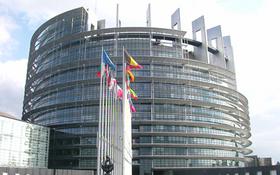Flexibility clause

- The seat of the European Parliament in Strasbourg (Photo: Quedza)
Flexibility clause
The flexibility clause is also nicknamed the "rubber clause" because it permits the EU to decide in areas not covered specifically by the treaties.
The Lisbon Treaty has extended the flexibility clause to allow flexible adjustments of EU competence in relation to all the objectives of the Union. The clause can be found in Article 352 TFEU.
The old flexibility clause could only be used in connection with the common/internal market. The new clause can be used in all areas of competence of the European Union.
The EU can in theory only make decisions if there is a specific legal basis for doing so in the treaties. This is called the principle of conferred powers.
However, the TEC contained a so-called flexibility clause, which has been used to extend the area of EU regulation in some 830 times. The old clause can be found in the Nice Treaty Article 308 TEC. In the Treaty of Rome it was numbered Article 235.
It was used particularly in the 1970s and 1980s to increase the competence of the EU before the adoption of the Single European Act (SEA) in 1987, which introduced articles that are more specific and chapters empowering the EU to legislate in areas such as environment, research, development and regional policy.
